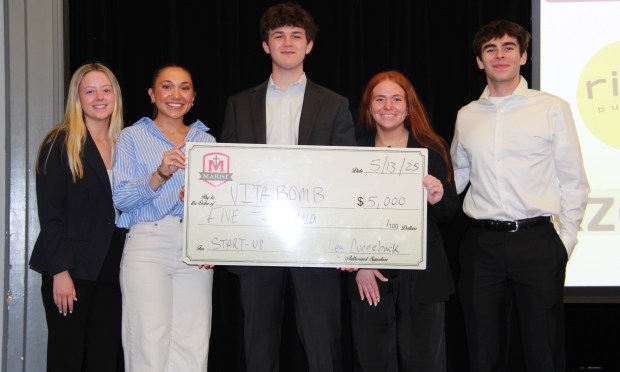Oswego Village Board members voted to annex and rezone land in unincorporated Kendall County for a proposed 801-unit residential development that would include townhomes and single-family homes.
Voting in favor of the annexation agreement were Village President Ryan Kauffman and Trustees Tom Guist, Jennifer Jones Sinnott, Karin McCarthy-Lange, Andrew Torres and Karen Novy. Voting the other way was Trustee Kit Kuhrt.
McCarthy-Lange was supportive of the development based on planned Wolf’s Crossing Road improvements.
“The survey said traffic was a big issue in our community,” she said referencing a recent community survey. “This development will help us expand Wolf’s Crossing earlier than originally planned. That’s a huge component to me.”
Trustees voted for rezoning and approval of the preliminary planned unit development as well. Kuhrt abstained on those votes.
Developer D.R. Horton Midwest is proposing to build Sonoma Trails on 228 undeveloped acres between the intersection of Wolf’s Crossing Road and Fifth Street and the southwest corner of Wolf’s Crossing Road and Roth Road.
The northwest and south portions of the property are currently in unincorporated Kendall County, village officials said.
The Oswego Village Board approved a concept plan for Sonoma Trails in August 2022 which included a mix of single-family units and multi-family units in the development.
Staff and the developer jointly requested two public hearings be extended last month to work through terms of the annexation and “significant improvements” along Wolf’s Crossing Road.
Highlights of the annexation agreement include having the developer “if required” provide for an easement along Roth Road to provide adequate space for a potential water main as part of the Lake Michigan water project, village officials said.
The developer will dedicate right-of-way for the Wolf’s Crossing Road expansion project as well, according to the agreement.
“The fees collected from the transportation impact fee and village impact fee will fund the complete Wolf’s Crossing Road improvements along the northern end of the Sonoma Trails development,” Oswego Development Services Director Rod Zenner said in a report to trustees.
“The developer’s contribution to the road improvements will be capped at the total amount of the transportation and village impact fees paid into an escrow account, roughly $4.5 million, plus the value of the turn lane improvements, estimated at $1.5 million,” he said.
“This roughly equates to the latest estimates to complete the full scope of work,” Zenner said in the report.
“Per the terms of the agreement, the village should decide by May 1 if the bidding and construction of the improvements will be assigned to the developer. Once the developer has contributed $2 million in impact fees to the escrow account, the developer will be obligated to begin construction,” according to the report.
“If the village decides to proceed with construction prior to the developer contributing $2 million, the village can fund the gap in order for the project to proceed and be reimbursed through future impact fees. At the earliest, construction of the Wolf’s Crossing Road improvements is expected to occur in 2026,” according to the report.
“To get this in the annexation agreement is what took so long,” Oswego Village Administrator Dan Di Santo told trustees.
According to terms of the annexation, the developer will provide School District 308 $2.4 million in impact fees and $1.4 million in land/cash fees, village officials said.
Naperville-based attorney Russ Whitaker represented D.R. Horton in the matter.
“We are the largest home builder nationally in the Chicago region. In 2023, D.R. Horton closed on more than 1,000 homes in the Chicago market serving multiple buyer segments across a variety of price points,” Whitaker told trustees.
Sonoma Trails represents one of the developer’s largest investments in the Chicago region, he said, and Oswego “is a key element of its business plan in the next five to 10 years.”
“The scale of what’s being proposed is an important point,” he said. “As we get into the project, it’s easy to pick out specific details and lose sight of the broader vision. The vision is for a large-scale amenity-driven community. A community with diverse product type between neighborhoods but also a community that is unified through common open spaces, walking trails and an 11-acre amenity community center only made possible through the scale of the project.”
About 48 acres of open space will be part of the project, the developer’s representative said, with seven “pocket parks” proposed plus three miles of trails in the development, he said.
Linda Girardi is a freelance reporter for The Beacon-News.




